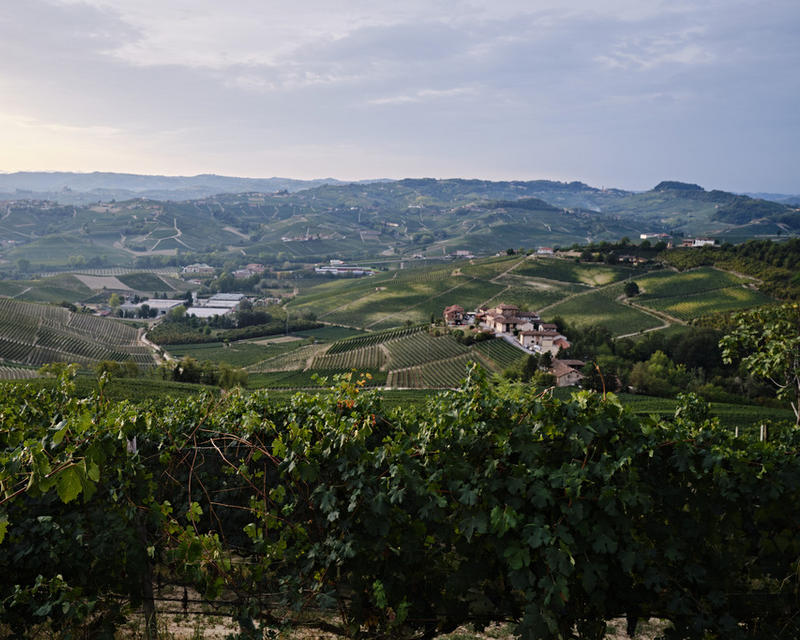Home > Editorial > Barolo 2019 vintage report
FOUR-MINUTE READ
Davy Żyw, Italy Buyer
We are thrilled to introduce the 2019 vintage from Barolo. This was a classical year in the region: the wines are fresh, fruity and tannic, and the villages and crus defined. Nebbiolo has given us a vintage which will stand the test of time, as well as one which restores confidence in the wines following a few more unsettled years.
The 2019s are a vintage which provides us with the best of both contemporary and classical. These wines offer all the pleasure of a modern vintage - winemaking accuracy, gleaming fruit purity – alongside with the classical structure of a firm acid line and delicious, yet time-demanding tannins. This is a vintage for pure Barolo lovers, but one that will demand you practice patience.
Overall, 2019 was a cooler year in Barolo, with slow ripening resulting in a late harvest. The growing year started well, with a welcoming snow in January and February. This was followed by a cold, wet spring which delayed flowering and vegetative growth - but importantly provided vineyards with ample water resources for the year ahead.
Summer brought a significant heat-spike at the end of June, which delayed phenolic maturity. Much of the tension of tannin in the 2019 Barolo wines can be pinpointed to this intense snap of weather. A stormy July followed, with frequent and rejuvenating rain that continued throughout August and September. This cooled and freshened the year’s resulting wines.
Localised hail ripped through some vineyards on the 5th of September. Bruna Grimali lost the entirely of its Ravole cru, but those that were spared rejoiced in an ideal end to the growing year. September and October saw warm days and cool nights, which aided the complexity and maturity of the phenolic ripeness and thickness of the Nebbiolo skins. Most Barolo producers started to pick during the second or third week of October, to avoid the forecasted autumnal rains.
The resulting harvest was one of the longest and latest of the past 10 vintages. Despite the excellent growing season and quality of fruit at harvest, this was not an easy vintage to make. Many producers found the wines demanding in the cellars and difficult to read, due to their intense structure overshadowing the fruit.
But now, after time in bottle and as we approach their drinking window, we can more clearly see that although the 2019 Barolos are less immediate in presentation, the quality is outstanding. This vintage is pulsing with potential, and built to last.
2019 in Barolo was an excellent vintage, but not in the usual way that one might expect from an exemplary year. Stylistic and qualitive choices made in the winery were the difference between the great and the greatest wines; largely how the skin contact and maceration was handled.
Fruit from the 2019 vintage boasted a high skin-to-pulp ratio. Because of the summer weather and cooler season, not every winery achieved perfect phenolic maturity within their skins. Like many of the best classical vintages, top results often came from older vines and optimal vineyard sites.
Producers with the best sites that did achieve perfect maturity had the advantage. Their results wines – the best of the vintage – have bold (verging on austere) yet balanced, tannic structures.
In Barolo’s 2018 vintage, wines were transparently of their terroir. In 2019, this terroir character is magnified, as is the personality of the winemaker behind the label. The distinction between crus and individual producer philosophies has never been clearer than in this release.
There is a chiselled clarity to the tannins in the wines, reminiscent of 2013 or 1999 – both great vintages. But neither of these articulated the nuances between the contours, aspects, altitudes, soils and sensitivities of their makers like Barolo’s 2019 vintage does. Despite the region often being swathed in mist, these wines have never been in sharper focus.
There is real joy to be found in 2019 Barolos; offering contemporary precision paired with classical structure, they are vertical and high-toned. You can expect plenty of “grinta” due to the tangy freshness and firm edges of china-bone Barolo tannin, all dressed in the bright flowing silk of succulent fruit.
Whether you are a Nebbiolo purist, collector, investor or Italian wine enthusiast, no-one should be without the 2019. This is a new benchmark for classical Barolo – just don’t open the cork too soon.






